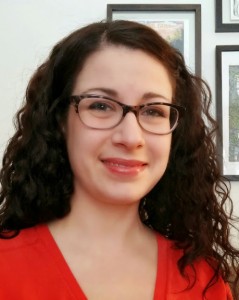I’m not writing to convince you that you should use R to teach simulation-based inference (SBI). My goal is to convince you that you can use R for SBI, even with students (and instructors) who have never used R before. Along the way I’ll mention some guiding principles and illustrate some tools that my colleagues Danny Kaplan and Nick Horton and I have assembled in the mosaic R package to make SBI (and EDA and traditional inference procedures) much easier.[pullquote]The biggest key to using R well is to provide a lot of creative opportunity with as little R as possible.[/pullquote]
Some thoughts and experiences using simulation/randomization based methods in introductory statistics courses and in the undergraduate statistics curriculum
 Andrew Schaffner, Cal Poly, San Luis Obispo
Andrew Schaffner, Cal Poly, San Luis Obispo
I’m a skeptic. As a mid-career classically trained statistician, for many years I held tight to the teaching methods used when I was a student: lecture presentations and mathematical arguments to support instruction. For non-calculus based courses I would rely heavily on analogies to bridge concepts (e.g., Behar, et al. Twenty five analogies). Yet even with analogies, students performance on exams and conversations in my office hours often fell short of demonstrating real understanding. I’m waking up. In part because of my work as a co-author with Jeff Witmer, or perhaps because my across-the-hall neighbor is Beth Chance, I’ve finally begun to embrace randomization and simulation methods for classroom instruction.[pullquote]When working with our majors, … we can take the time to develop foundational understanding with a more in depth randomization curriculum. [/pullquote]
Randomization and the Undergraduate Curriculum
 George Cobb, Mount Holyoke College
George Cobb, Mount Holyoke College
I’m writing about implications of simulation-based inference (SBI) for the undergraduate statistics major, but also for students who take only one or a few statistics courses, because these implications apply also to the undergraduate major. I begin with some strengths and omissions of SBI in its current forms.[pullquote]… the SBI course serves as a foundation for more advanced courses. How does it compare with more traditional first courses? Potentially, it offers better preparation for additional courses, but the details will depend on rethinking the intermediate and advanced curriculum. [/pullquote]
Who says you can’t teach an old dog new tricks?
 Kim Gilbert – University of Georgia
Kim Gilbert – University of Georgia
Trying something completely different can be very scary. But sometimes, you just know it’s totally worth the risk. That’s how I felt after hearing a couple of fabulous stat educators talk about using simulation-based methods for teaching the intro course. I was immediately inspired by their enthusiasm. But more importantly, I was excited to try pedagogy that they/I believed would make a genuine difference in student learning. So I jumped head first into the deep end and have enjoyed every minute.[pullquote]As it turned out for me, technology helped.[/pullquote]
Strategies to find real data from genuine studies
 Soma Roy – Cal Poly, San Luis Obispo
Soma Roy – Cal Poly, San Luis Obispo
I firmly believe that the key to getting students to appreciate what the discipline of Statistics does is to show them examples – lots of examples of a variety of real studies that investigate real research questions, and have students analyze the data from such studies. And, so in all of my classes I use data from real research studies to help students understand that Statistics is about things that matter, and that it has applications to the real world, which they tend to think of as separate from their statistics class, especially when it is a General Education class. Below I have listed a few strategies I use to give students experience with real data from genuine studies, a few resources where you can find such data and studies, and have also included a few examples of studies I use in class.[pullquote]… I often have to go through many articles before I find something that fits the objective(s) I have in mind. On the plus side, I often find articles that though not suitable for the topic I have in mind at the time, does have other things to offer.[/pullquote] Continue reading
Why Even Bother To Teach The Normal Stuff?
 George Cobb, Mount Holyoke College
George Cobb, Mount Holyoke College
I’m writing to respond to a pair of questions we often hear from teachers who are considering a simulation-based alternative to the traditional normal-centric course: (1) “If the simulation-based approach is so great, why even bother to teach the normal-based stuff at all?” (2) If I’m going to include the normal-based stuff, do you have any suggestions about how to make the transition? ”[pullquote]The “theory” in what some of us call the “theory-based approach” is the Central Limit Theorem, actually a cluster of theorems about convergence of sampling distributions to normal (Gaussian). [/pullquote]
Are Normal-Based Methods “Smothering” Our Students’ Understanding of Inference?
 Tisha Hooks, Winona State University
Tisha Hooks, Winona State University
As an undergraduate student, I learned a lot in my intro stat course about what formulas/tables to use and when to use them; unfortunately, I learned very little about why these methods worked. As a young professor, I set out to give my students an experience that was very different from mine. Fortunately for me I landed at Winona State University where I was able to work with Chris Malone, who had recently revamped his intro course. One of the first papers Chris encouraged me to read was written by George Cobb (referenced below), and the following quote hit home: “Our curriculum is needlessly complicated because we put the normal distribution, as an approximate sampling distribution for the mean, at the center of our curriculum, instead of putting the core logic of inference at the center.” Early on in my career, I’m pretty sure that Chris and I talked at least once a day about how to center our curriculum on core inferential concepts, and I started using a simulation-based curriculum which has allowed me to get to these core concepts early and often.[pullquote]… my transition to normal-based methods involves using simulations/randomizations to introduce the logic of inference, connecting the empirical probabilities obtained from simulation studies to theoretical probabilities used in traditional tests… [/pullquote]
Continue reading
How do I use simulation-based methods to enhance student understanding of AP Statistics
 Bob Peterson, Mona Shores High School, Muskegon, Michigan
Bob Peterson, Mona Shores High School, Muskegon, Michigan
I love statistics!! I have been teaching for 25 years, and in 2003, when I got the opportunity to develop an AP Statistics class after having been teaching AP Calculus, I jumped at the chance. At that time, I was fortunate enough to participate in a course called INSPIRE, which was run by the stats gurus Allan Rossman, Beth Chance, Roxy Peck and many others. This class was designed for the new AP Stats teacher. Since then I have tried many different ways to help my AP Statistics students gain a deeper understanding of statistics. So, when I learned about the possibility of using simulation-based methods I was immediately excited about a course that could take advantage of tangible hands-on activities, computer simulations and high levels of reasoning. [pullquote]…since I have implemented more simulations within my class, students have had an easier time of understanding the hows and whys of the theory-based methods of inference that AP students must master.[/pullquote] Continue reading
Making the Most of Simulation-Based Inference in an AP Statistics Class
 Catherine Case, University of Florida
Catherine Case, University of Florida
My first experience teaching statistics was at the college level, so for my first few years of teaching, I never heard the infamous question, “Can we have a free day?” Now that I teach AP Statistics at a high school, I do hear that question from time-to-time (somewhere between 1 and 1 million times per day), and I need to be prepared with a good answer! Why should they care about what we’re doing in class today? My first goal for each class is to get buy-in from my students, to convince them that statistics is relevant to their lives and we have important, interesting things to accomplish. Simulation-based inference helps me do that. We’re able to draw inferences from real-world data starting on the first day of class, and breaking out spinners, dice, and coins never hurts! [pullquote]Incorporating simulation-based inference in a high school statistics class presents… opportunities for students to make connections and gain experience with statistical inference throughout the course.[/pullquote]
Getting Started with a Simulation-based Curriculum
 Kathryn Dobeck – Lorain County Community College, Ohio
Kathryn Dobeck – Lorain County Community College, Ohio
In 2012, I had a simple goal for my first sabbatical project: to revise the course materials for my Introduction to Statistics course in order to make them more accessible and relevant to my students. I had long been bothered by the presentation of statistical concepts that our textbook used, due to its overuse of flowcharts and “cookbook-style” explanations where logical justification should have been. With this approach, students were hung up on basic ideas such as arithmetic, rounding issues, and determining which formula to use, but never reached the higher orders of statistical thinking. My quintessential statistics course would convey the power of analyzing data, present motives for inferential statistical methods, and demonstrate the ubiquitous nature of the discipline. Unfortunately, at that time, the specific details of how I was going to solve these problems and realize my ideal course were yet to be determined (and hence the need for a sabbatical!). [pullquote]I’d be lying if I said that changing to a simulation-based curriculum wasn’t a lot of work. It definitely was. However, the work load was manageable over the course of a year and was worth every bit of it. Now, student success rates and attitudes have improved and the course is an absolute joy to teach.[/pullquote]

